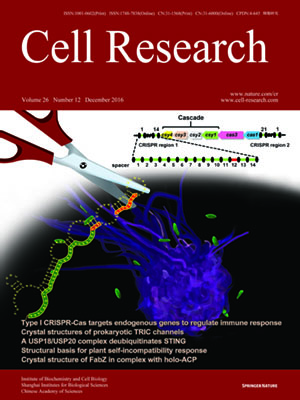
Volume 26, No 12, Dec 2016
ISSN: 1001-0602
EISSN: 1748-7838 2018
impact factor 17.848*
(Clarivate Analytics, 2019)
Volume 26 Issue 12, December 2016: 1345-1348
LETTERS TO THE EDITOR
Mapping of long-range chromatin interactions by proximity ligation-assisted ChIP-seq
Rongxin Fang1,2,*, Miao Yu1,*, Guoqiang Li1, Sora Chee1, Tristin Liu1, Anthony D Schmitt1,3 and Bing Ren1,4
1Ludwig Institute for Cancer Research, La Jolla, CA 92093, USA
2Bioinformatics and Systems Biology Graduate Program, University of California, San Diego, La Jolla, CA 92093, USA
3Biomedical Sciences Graduate Program, University of California, San Diego, La Jolla, CA 92093, USA
4Department of Cellular and Molecular Medicine, Institute of Genomic Medicine, and Moores Cancer Center, University of California at San Diego, La Jolla, CA 92093, USA
Correspondence: Bing Ren,(biren@ucsd.edu)
Formation of long-range chromatin loops is a crucial step in transcriptional activation of target genes by distal enhancers1,2. Mapping such structural features can help define target genes for enhancers and annotate non-coding sequence variants linked to human diseases1,2,3. Study of the higher-order chromatin organization has been facilitated by the development of chromosome conformation capture (3C)-based technologies4,5. Among the commonly used high-throughput 3C approaches are Hi-C6 and chromatin interaction analysis by paired-end tag sequencing (ChIA-PET)7.
10.1038/cr.2016.137
FULL TEXT | PDF
Browse 2045


